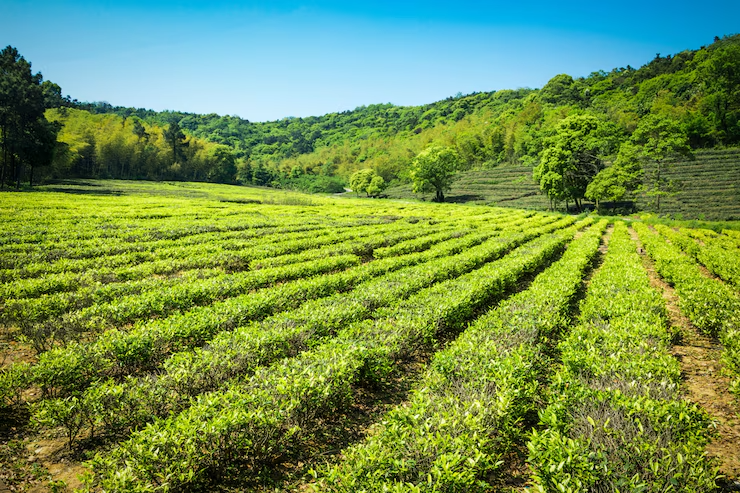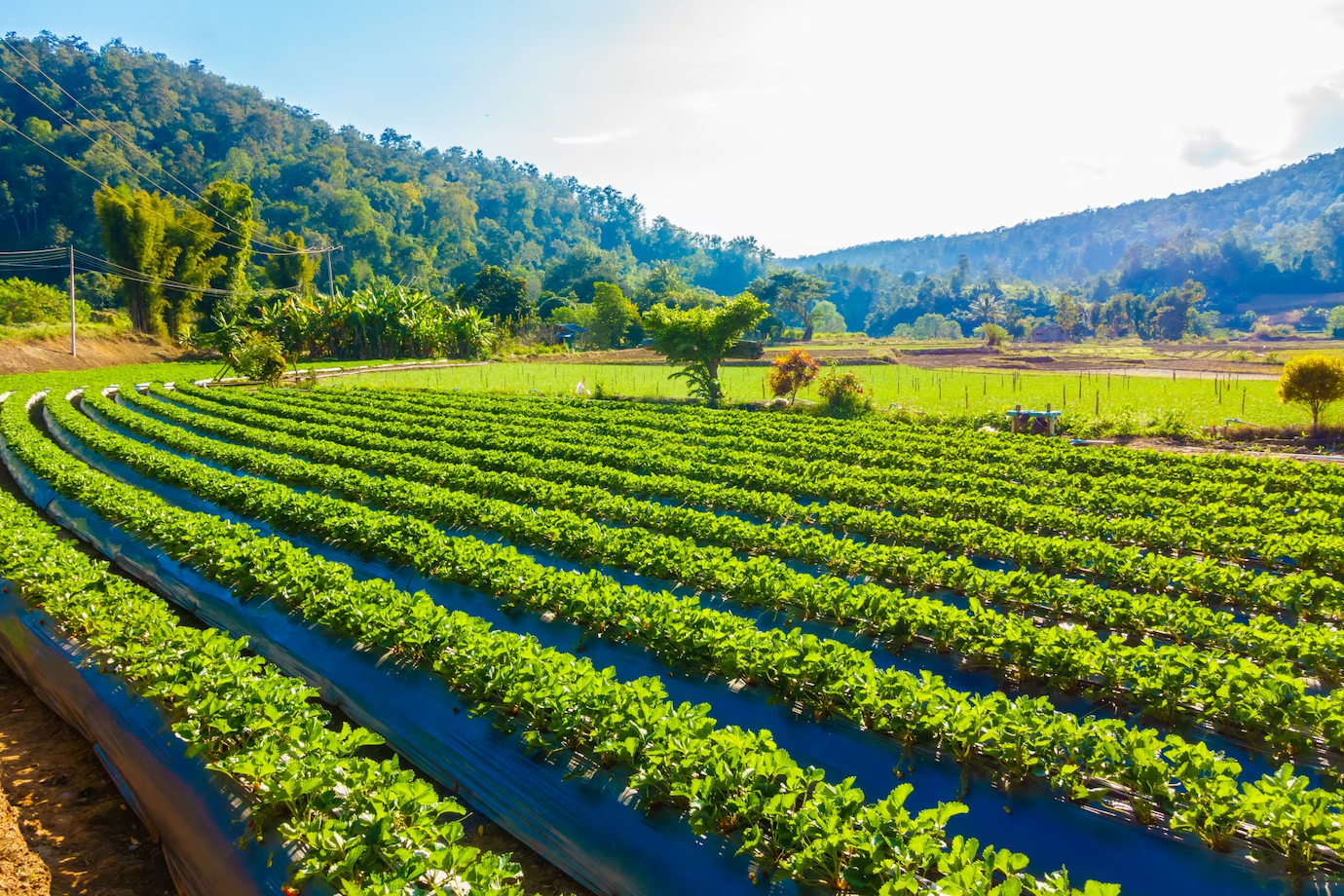Introduction
Mirchi, commonly known as chili pepper, is one of India's most significant spice crops. Renowned for its pungency and color, the mirchi crop plays a vital role in Indian cuisine, exports, and rural livelihoods.
Historical and Cultural Importance of Mirchi
-
Origin: Native to Central and South America, chili peppers were introduced to India by Portuguese traders in the 15th century.
-
Indian Significance: Today, India is the world’s largest producer, consumer, and exporter of dry chilies.
-
Cultural Role: Mirchi is a staple in Indian kitchens and has deep roots in traditional Ayurvedic and folk medicine.
Major Producing States in India
-
Top States: Andhra Pradesh, Telangana, Karnataka, Maharashtra, Madhya Pradesh.
-
Key Stats: Andhra Pradesh alone accounts for over 45% of India’s total chili production.
Popular Varieties of Mirchi in India
| Variety | Region | Traits |
|---|---|---|
| Guntur | Andhra Pradesh | High pungency, export quality |
| Byadgi | Karnataka | Deep red color, low pungency |
| Teja | AP, Telangana | Very hot, high yielding |
| Bhut Jolokia | North East India | Extremely pungent (ghost pepper) |
| Kashmiri | Jammu & Kashmir | Rich color, mild heat |
Climatic and Soil Requirements
-
Temperature: 20–35°C
-
Rainfall: 600–1000 mm (well-distributed)
-
Humidity: Moderate
-
Soil: Sandy loam to clay loam with pH 6.0–7.5 and good drainage
Land Preparation and Field Management
-
Ploughing: 2–3 deep ploughings with leveling
-
Bed Formation: Raised beds improve drainage
-
Weed Control: Pre-emergent herbicides or manual weeding
Seed Selection and Sowing Techniques
-
Use certified seeds of high-yielding, disease-resistant varieties
-
Sowing Seasons:
-
Kharif: June–July
-
Rabi: October–November
-
-
Spacing: 60 x 45 cm for optimal growth
Nursery Management (for transplanting)
-
Seedbed Size: 3 x 1 m raised beds
-
Seed Rate: 1–1.5 kg per acre
-
Treatment: Trichoderma, carbendazim, and neem extract for disease control
Transplanting and Direct Sowing
-
Transplanting: At 30–35 days old, when seedlings are 10–12 cm tall
-
Spacing: 60 cm row-to-row, 45 cm plant-to-plant
-
Direct Sowing: Suitable for rainfed regions with seed drills
Irrigation Management
| Growth Stage | Water Need |
|---|---|
| Germination | Light and frequent |
| Flowering/Fruiting | Regular and uniform |
-
Preferred Methods: Drip irrigation for water efficiency; avoid waterlogging
Fertilizer and Nutrient Management
-
Recommended NPK (kg/acre): N – 60, P – 40, K – 40
-
Basal Dose: FYM @ 5–6 tons/acre
-
Top Dressing: Urea in 2–3 splits
-
Supplements: Micronutrients (Zinc, Boron) and biofertilizers (Azospirillum, PSB)
Pest and Disease Management
-
Major Pests: Thrips, mites, aphids, whiteflies
-
Diseases: Powdery mildew, leaf curl virus, damping-off, anthracnose
-
Management: Use neem oil, Beauveria bassiana, Trichoderma, sticky traps; rotate with non-host crops
Intercultural Operations
-
Weeding: Every 15–20 days
-
Mulching: Reduces evapotranspiration and weeds
-
Growth Regulators: For fruit setting (NAA sprays)
-
Pruning: Enhances air circulation and yield
Harvesting and Yield Estimation
-
Harvest Stage: Fruits turn red; pick at 75–90 days after transplanting
-
Intervals: Every 7–10 days
-
Yield: 15–20 quintals/acre (dry), 60–100 quintals/acre (green)
Post-Harvest Handling and Storage
-
Drying: Sun-dry for 8–10 days or use mechanical dryers
-
Grading: Based on color, size, and pungency
-
Packing: Gunny bags or moisture-proof bags
-
Storage: Cool, dry warehouses or cold storage for exports
Mirchi Crop Economics and Profitability
-
Cost of Cultivation: ₹40,000–₹60,000/acre (approx.)
-
Selling Price: ₹90–₹250/kg (dry) depending on variety
-
Net Return: High ROI in irrigated or contract-farming setups
Export Potential of Indian Chilies
-
Popular Export Varieties: Guntur Sannam, Byadgi, Teja
-
Export Markets: China, Bangladesh, Sri Lanka, USA, Malaysia
-
India’s Share: 40% of global chili exports
Government Schemes and Subsidies
-
MIDH & NHB: Assistance for greenhouse nurseries, pack houses
-
Subsidies: For drip irrigation, hybrid seeds, organic inputs
-
Agri-Export Zones (AEZs): Focused chili export hubs in AP and Telangana
Organic Mirchi Farming
-
Certification: Through NPOP or PGS India
-
Inputs: Panchagavya, neem cake, Jeevamrutham
-
Yields: 15–30% lower initially, but higher premium prices
Challenges in Mirchi Cultivation
-
Climate change and irregular monsoons
-
Pest resistance and viral outbreaks
-
Market price fluctuations and storage losses
Solutions:
-
Use of early-warning systems
-
Insurance coverage
-
Farmer Producer Organizations (FPOs) for collective bargaining
Role of Technology in Mirchi Farming
-
Mobile Apps: Kisan Suvidha, AgriApp for real-time info
-
AI & Drones: For disease detection and precision spraying
-
FPOs and E-Mandis: Better price discovery and market linkage
Conclusion
Sustainable mirchi crop cultivation requires scientific planning, market awareness, and technological adaptation. With growing global demand and robust domestic consumption, chili farming offers excellent profitability for informed farmers.
FAQs
Q1: Which mirchi variety is best for export?
A: Guntur Sannam and Teja are the most demanded varieties globally.
Q2: What are common pests in chili crops?
A: Thrips, mites, aphids, and whiteflies are the most prevalent pests.
Q3: How often should I irrigate a mirchi field?
A: Every 7–10 days depending on soil moisture and weather conditions.
Q4: What is the yield per acre in dry vs irrigated conditions?
A: 12–15 quintals/acre in dryland; 20–25 quintals/acre with drip irrigation.
Q5: Can I grow mirchi organically and still profit?
A: Yes, especially with premium pricing and export-grade produce.



